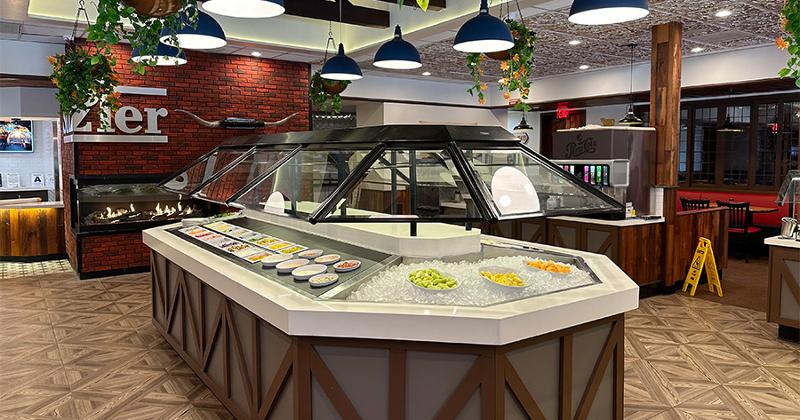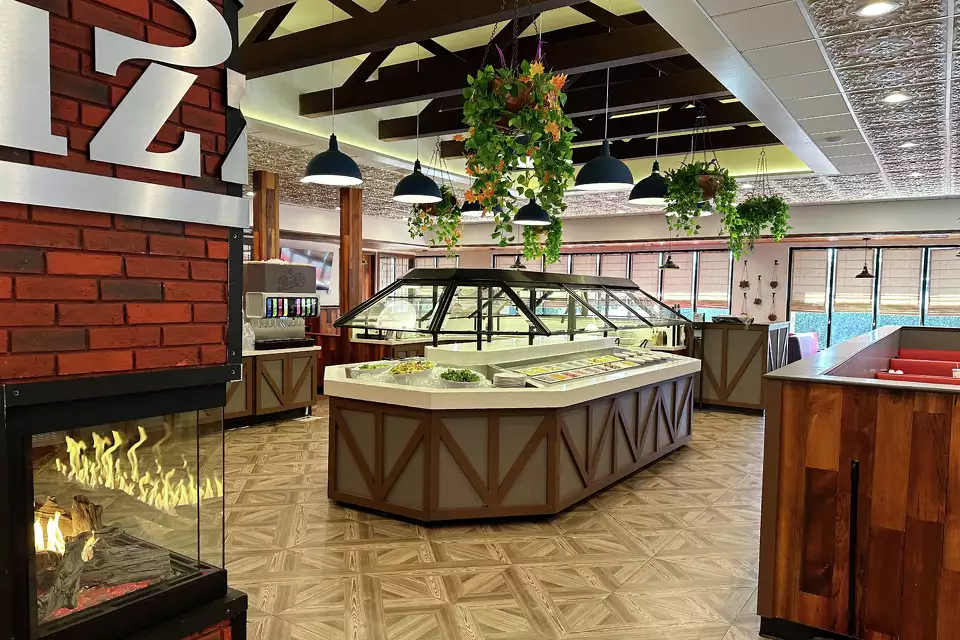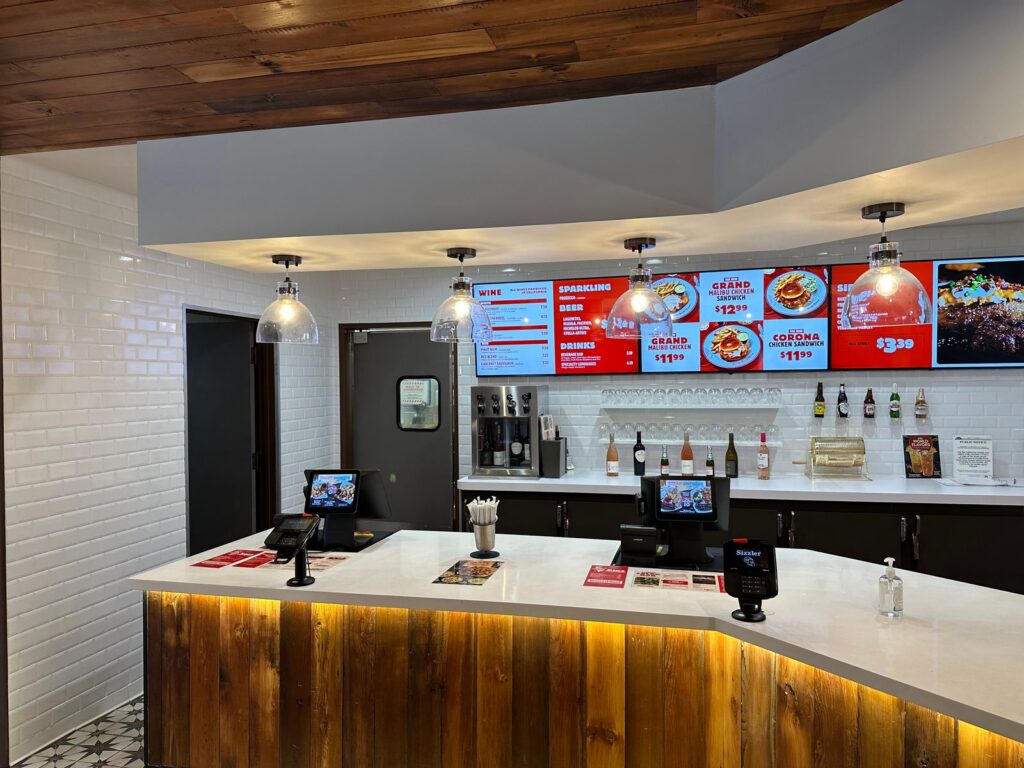Sizzler aims for a renaissance by unabashedly embracing its past

The chain plans to remind lapsed patrons of what they once enjoyed, with hopes they’ll bring younger members of the family back with them.

Once upon a time, trend hunters could find game aplenty at a quirky but hugely popular West Coast restaurant concept called Sizzler.
Here, after all, was a place selling New York strip steaks for not much more than you’d pay for a fast-food meal. And you’d get it via a serving system that was neither fish nor fowl—not quite self-service, but not the full Monty at a table, either. You’d place your order at a counter, settle your bill, then grab a table to wait for the meal to be prepared, at which point you’d be summoned to retrieve it from a pickup station.
It’s the signature set-up of fast casual, adopted long before the term was coined.
The wait usually left just enough time to hit the salad bar, still a novel restaurant amenity at the time. The others that existed were largely condiment stations where fast-food customers could dress their burgers. Sizzler’s version was more of a mini-smorgasbord—enough of a meal for the chain to market it as such. The array proved a popular lunch-hour option for female office workers, a demographic seldom in the crosshairs at the time.
Dinner patrons also enjoyed what were then still rarities, like the availability of beer and wine from a family restaurant. Other players in the sector wouldn’t crack open a bottle for several more decades.
But the cutting edge isn’t where Sizzler wants to be today. At age 65, the concept is hoping to rejuvenate itself not by aiming to be the next Chipotle or Starbucks, but by reminding consumers that it’s still sporting the features that made it one of the industry’s hottest concepts of the 1980s.
“Where else are you going to find a 14-ounce ribeye for $24?” says Robert Clark, chief growth officer for Sizzler USA.
“People still have great memories of Sizzler,” continues Clark, a trained chef who’s been with the company since 1984. “They still talk about the Sizzler Cheese Toast,” a Texas toast-sized slice with a smear of cheesy topping. “They still talk about the salad bar.”
The chain plans to play off that nostalgia in a bid to reclaim the lapsed users who drifted away from the concept as new competition lured away Sizzler’s family clientele in the 1990s. It was squeezed from above by the rapid expansion of casual-dining chains, while fast-casual upstarts provided pressure from below. In 1996, the chain closed 130 locations and filed for Chapter 11 bankruptcy protection.
Management tried to plot a comeback by shifting the concept upmarket–with disastrous results. Twenty-one more units had to close in 2001.
The concept tried several recasts, including a trial of a replacement concept, but found little traction. Then came the pandemic, a disaster for a brand whose signature included a salad bar. Despite strong steak sales, the company filed again for Chapter 11 protection in September 2020.
Despite that troubled corporate past, the operation is convinced there’s enough fond recollection of Sizzler to bring back the customers who stopped visiting.
“We think it’s really important,” Clark says. “We really want to celebrate our heritage. But we need to be careful. We don’t want to look old. We want to have fun with it.”
New TV ads feature Jodie Sweetin, who became a star of the hit TV sitcom “Full House” after appearing as a little girl in a Sizzler commercial 36 years ago. She is currently starring in a reboot of the show, called “Fuller House.”
“I started here at Sizzler, and I’m here to tell you, it’s still as good as ever,” Sweetin says in one of the spots.
As she speaks, she’s standing in a Sizzler in Los Feliz, Calif., that has yet to be renovated.
Clark describes it as a facelift—“this is largely cosmetic, not structural.” The refresh will likely extend to giving stores a new paint job and updating the carpeting.
A more-ambitious renovation will come further down the road, he says. Part of that effort will be deciding how big the stores should be. Right now, they range from 4,000 square feet all the way up to 8,000 square feet.
And “kiosks are definitely in our future,” he adds.
The chain’s franchisees have agreed to give their stores a remodel by April.
“This is really a multi-year project, a five- or six-year effort,” says Clark. “Most Sizzlers were built in the 1980s. They’ve not been remodeled over the last 10 years.”
The chain is also planning to roll out a new menu. “Will it be a sea change? No,” say Clark. “We’re not going to be a leader of change.”
Rather, the focus will be on improving some items and adding more lunch options. At present, midday business generates about 45% of sales, or almost an even split with dinner.

The average tab will still be around $20 per person, a value that draws about 1,200 customers per week, says Clark. He pegs average unit sales for the 80 stores currently open in the continental U.S. and Puerto Rico at $55,000 a week, or nearly $2.9 million annually.
Part of the heavier reconceptualizing will be figuring out the right number and combination of seats, adds Clark. Big parties abound, a result of what he says is Sizzler’s appeal among families.
“We have something for everyone,” he says. “It’s hard to get a no-go decision because of a veto vote.”
It’s not unusual to see parties of 12 or more, often related, and the seating has to accommodate groups of that size. Older generations opt to visit, introducing their nieces, nephews and grandchildren to the concept. “We need to keep growing that part of the business,” says Clark.
The other big focus will be on boosting lunch business. The menu re-do will provide more lures, and the salad bar remains a viable option for workers looking to get in and out in under an hour. Currently, about 55% of customers either opt for the salad bar as a meal, or choose it as an add-on to a steak, seafood or chicken entree.
The other major component of the comeback effort is letting the public know about the food and experience they’ll find at a Sizzler. The new ad campaign is step one of that effort, with more executions to follow, Clark indicates.
Longer term, the brand will seek to grow again beyond its current concentration in the Western U.S. Another 85 Sizzlers operate outside North America, but the international group was spun off years ago to Collins Foods, which had brought the concept to Australia long before international expansion became as common as it is today for American brands.
“Our take on growth right now is we’re focusing on our existing restaurants,” says Clark. “We’re really focused on the relaunch, really working on system consistency and filing out the menu.”
One of Sizzler’s 21 corporate stores was renovated in February, and two others are currently getting an update. Results of the first re-do are strong justification for doing more, says the chief growth officer.
Indeed, having been with the concept through its heyday and its challenges, Clark says he’s never been more excited and optimistic about Sizzler’s future.
“We’re a profitable, growing business,” he says. “We’re feeling pretty good right now about where we are.”




